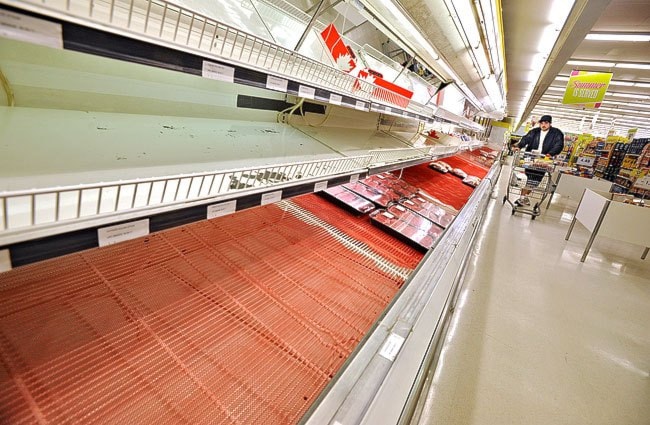While the rest of the F.H. Collins high school reconstruction plan may be an alarming schmozzle, it looks like behind-the-scenes government officials have come up with a clever plan to heat the new building: heat pumps.
Don’t associate this idea with the circus music coming out of the F.H. project in general. For those who haven’t heard already from teenagers at the school, the current reconstruction plan envisages a new U-shaped building being constructed around the old school over three years, while the students are attending it.
Once Workers Comp hears about the plan, they’ll probably make the students wear hard hats and orange high-visibility vests in class. The Department of Education makes elementary school teachers fill out lengthy “risk assessment” forms for field trips to the game farm, then blithely plans to have 600 high school students attend class in the middle of a major construction site for three years. Go figure.
Furthermore, the new U-shaped building is so close to the classrooms that they have to tear down the gym to build it. So the school will be gym-less from 2013 to the planned completion date of 2015, or whenever they actually finish it. To make matters worse, we heard on the radio that the Department of Education has asked Yukon College for gym space during these three years. So not only will the department boot weekend basketball and volleyball and other community groups out of F.H.‘s gym, they will compete for scarce community gym space by occupying the college gym.
But out of this chaos, comes what appears to be a gem of an idea.
Picking up on operating examples in Juneau, Seward, Mayo and even the MacBride Museum in Whitehorse, a leading option to heat the school is heat pumps. This is not a new technology; you have one in your kitchen. Your refrigerator takes the heat from your warm six-pack and moves it to the lint-covered coils behind the fridge. At F.H., the gadget would take the heat from groundwater and move it into warm coils in the floor of the new school.
There are a few amazing things about this technology, as I learned at a fascinating presentation hosted by Holly Goulding of the Yukon Research Centre and featuring David Black of the Department of Education. First, for every unit of electricity you put into F.H.‘s proposed system, it could move three or four units of heat from outside into the building. A good oil furnace might have an energy efficiency of 80-90 per cent, while the heat pump plans for F.H. are almost 400 per cent. Secondly, you don’t have to have hot water. The aquifer under F.H. is less than 10°C, but if you pump enough water through the heat pump you can extract enough heat for a big school.
Adding a clever twist, remember that our city’s drinking water comes from the same aquifer via pumps just down the road. So the water F.H. pumps out of the aquifer - once stripped of its excess heat - will be poured into the city’s drinking water system. This saves the cost of pumping the water back into the ground, and the risk of pumping anything into our drinking water aquifer.
The scheme also forecasts significant cost savings, and reduces the risk of fuel cost over-runs in the future. According to preliminary estimates, the heat pump will cost about $600,000 more to install than a modern propane system. But its annual costs will be about $65,000 less per year. Think of it as investing $600,000 to get an annual return of $65,000 for several decades.
The detailed financial model says the investment will pay back after seven or so years, after which the government will make major savings. Even better, the school will be insulated from any surges in fuel prices. This raises a classic problem with government projects. While a family or a private company might take the long-term view over the life of the building, governments often focus on this year’s budget. The heat pumps drive up the headline cost of the school and create headaches for today’s cabinet, while the savings will be reaped by the next generation of politicians.
Even more remarkable are figures from the engineers on the energy consumption of the new building compared to the old one. The current F.H. uses about 5,000 gigajoules of electricity per year, while the new building will only use around 3,000 (even with the new heat pumps).
This is such a large amount of electricity that I’m only partly joking when I say that perhaps F.H. should ask Yukon Energy’s “demand management” team to pitch in. Perhaps the power company could endow the new school with a quality theatre like Juneau-Douglas High School has, and which the design team couldn’t afford for the new F.H.
Apparently the government hasn’t made a final decision between heat pumps and propane. But if you see propane trucks rolling into F.H., ask your nearest politician why heat pumps wouldn’t work for F.H. but work fine at MacBride Museum, the National Oceanic & Atmospheric Labs in Juneau, SeaLife Center in Seward and the new Na-cho Nyak Dun Government House in Mayo.
And don’t forget to ask again in a few years if propane prices go through the roof as the global economy recovers.
Keith Halliday is a Yukon economist and author of the Aurore of the Yukon series of historical children’s adventure novels.
